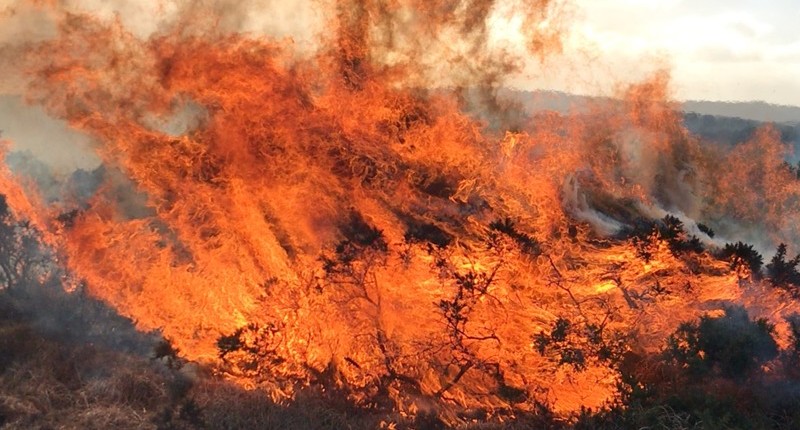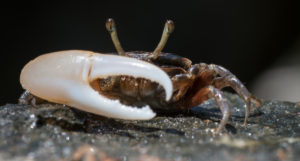Dry years fuel UK peatland fire carbon emissions

A fire on UK moorland. Credit Sarah Baker
A new study has revealed that as our springs and summers get hotter and drier, the UK wildfire season is being stretched.
More fires, taking hold over more months of the year, are causing more carbon to be released into the atmosphere as carbon dioxide.
When this is matched by plant regrowth carbon is drawn down from the atmosphere again but in the case of peat fires, carbon can be lost forever.
The researchers – from the universities of Cambridge and Exeter and the Met Office – found that despite accounting for only a quarter of the total UK land area that burns each year, wildfires that were able to burn into peat have caused up to 90% of annual UK fire-driven carbon emissions since 2001 – where these spikes in emissions occurred in particularly dry years.
Peat only burns when it’s hot and dry enough and these conditions are occurring more often with climate change.
The peatlands of Saddleworth Moor in the Peak District, and Flow Country in northern Scotland, have both been affected by huge wildfires in recent years.
Unlike heather moorland which takes up to 20 years to regrow after a fire, burnt peat can take centuries to reaccumulate.
The loss of this valuable carbon store makes any increase in wildfire frequency on peatlands in the future a real cause for concern.
Peat fires are therefore a hot topic of debate in regard to concerns of drought and heatwave years increasing wildfire risk in the UK, where particularly dry years may be capable of leading to large carbon emissions.
The researchers calculated that carbon emissions from fires on UK peatland in these dry periods are likely to rise by at least 60% if the planet warms by 2oC.
The findings are published today in the journal Environmental Research Letters.
“We found that peatland fires are responsible for a disproportionately large amount of the carbon emissions caused by UK wildfires, which we project will increase even more with climate change,” said Dr Adam Pellegrini, co-author of the paper from the University of Cambridge.
The researchers found that the UK’s “fire season” – when fires occur on natural land – has lengthened dramatically since 2011, from between one and four months in the years 2011-2016 to between six and nine months in the years 2017-2021.
Nine percent of the UK is covered by peatland, which in a healthy condition removes over three million tonnes of carbon dioxide from the atmosphere per year.
The researchers estimate 800,000 tonnes of carbon were emitted from fires on UK peatlands between 2001 and 2021.
The 2018 Saddleworth Moor fire emitted 24,000 tonnes of carbon, and the 2019 Flow Country fire emitted 96,000 tonnes of carbon from burning peat.
Lead author Dr Sarah Baker, from the University of Exeter, said: “A range of strategies will be needed to mitigate the severe effects of wildfire in peatland areas including managing the types and amount of vegetation on the landscape and taking a holistic approach to ecosystem restoration.”
To get their results, the researchers mapped all UK wildfires over a period of 20 years – assessing where they burn, whether peat burned, how much carbon they emit, and how climate change is affecting fires.
This involved combining data on fire locations, vegetation type and carbon content, soil moisture and peat depth.
Using Met Office model outputs, the team also used simulated climate conditions to project how wildfires in the UK could change in the future.
Co-author Professor Richard Betts, of the University of Exeter and the Met Office, said: “Climate change threatens UK peatlands through escalating fire risk, and the resulting emissions would add to the problem and make it harder to limit global warming to low levels. This underscores the urgency of both cutting emissions from fossil fuel burning and taking action to make peatlands more resilient.”
The research was funded by Wellcome, the Isaac Newton Trust and UKRI.



